One About Sugar
MARC BEHRENSFor centuries, the sugar loaf used to be the usual form in which refined sugar was distributed and sold. Sources have it that the first written accounts of sugar loaves in the Arab world date from the Middle Ages. Throughout the 20th century, the sugar loaf has almost vanished from most European countries (in fact, in October 2016, some audiences in Ireland had never heard of them), but are still a main feature of a traditional German drink made from rum, wine and spices, called «Feuerzangenbowle», particularly popular during the last weeks of the year. This drink is celebrated with the burning of the rum soaked sugar loaf in a metal receptacle, and is an occasion for familial and social gatherings.
The first sugar loaf burning I conducted, took place in August 2012 during a planned visit to the town of Schladen (Lower Saxony, central Germany) [image 1]. It served as a humble magic ritual directly related to my father’s family. Schladen is where my father was born and where his father and some of his family members died. Also, a sugar factory is located there.
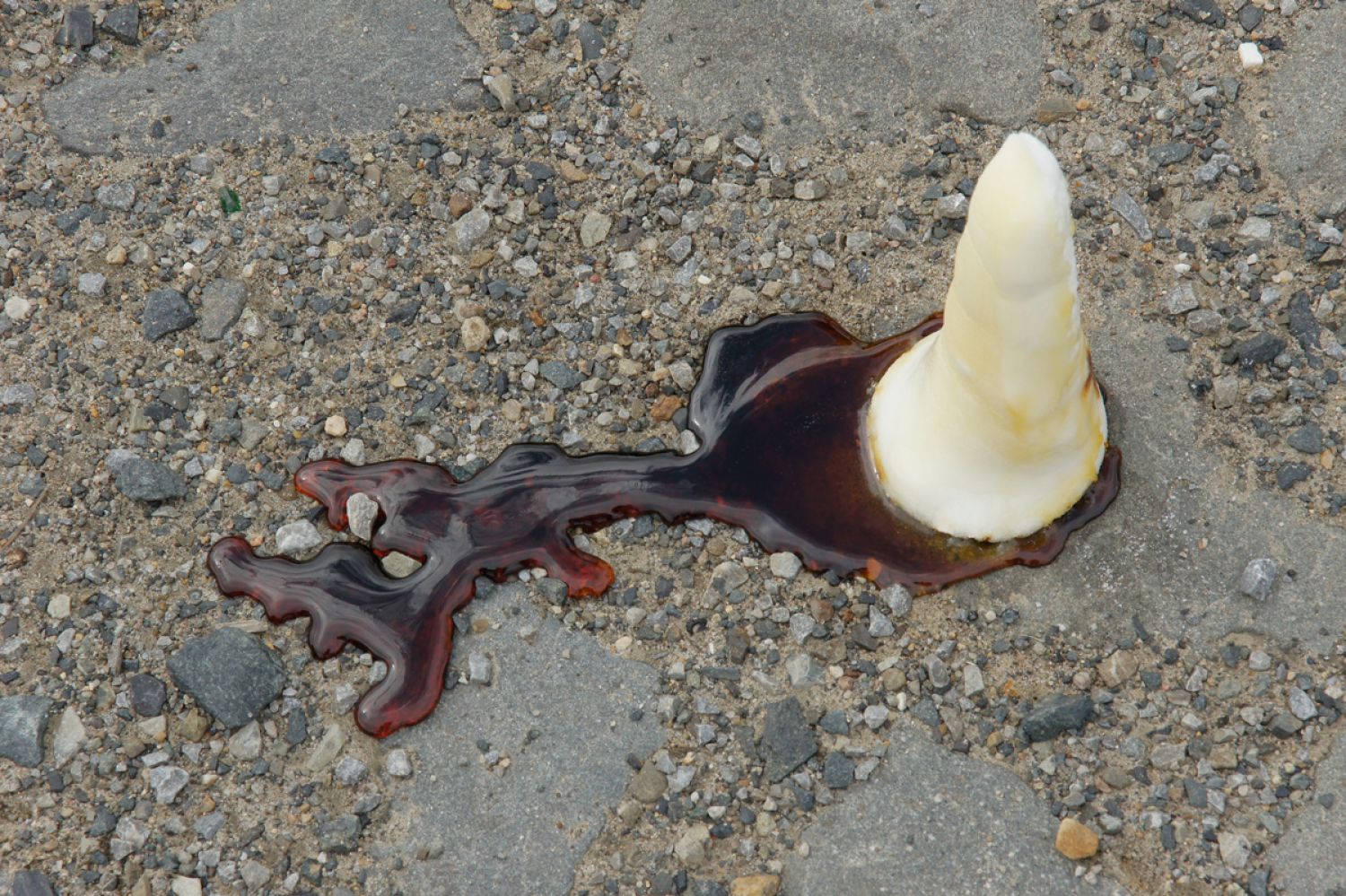
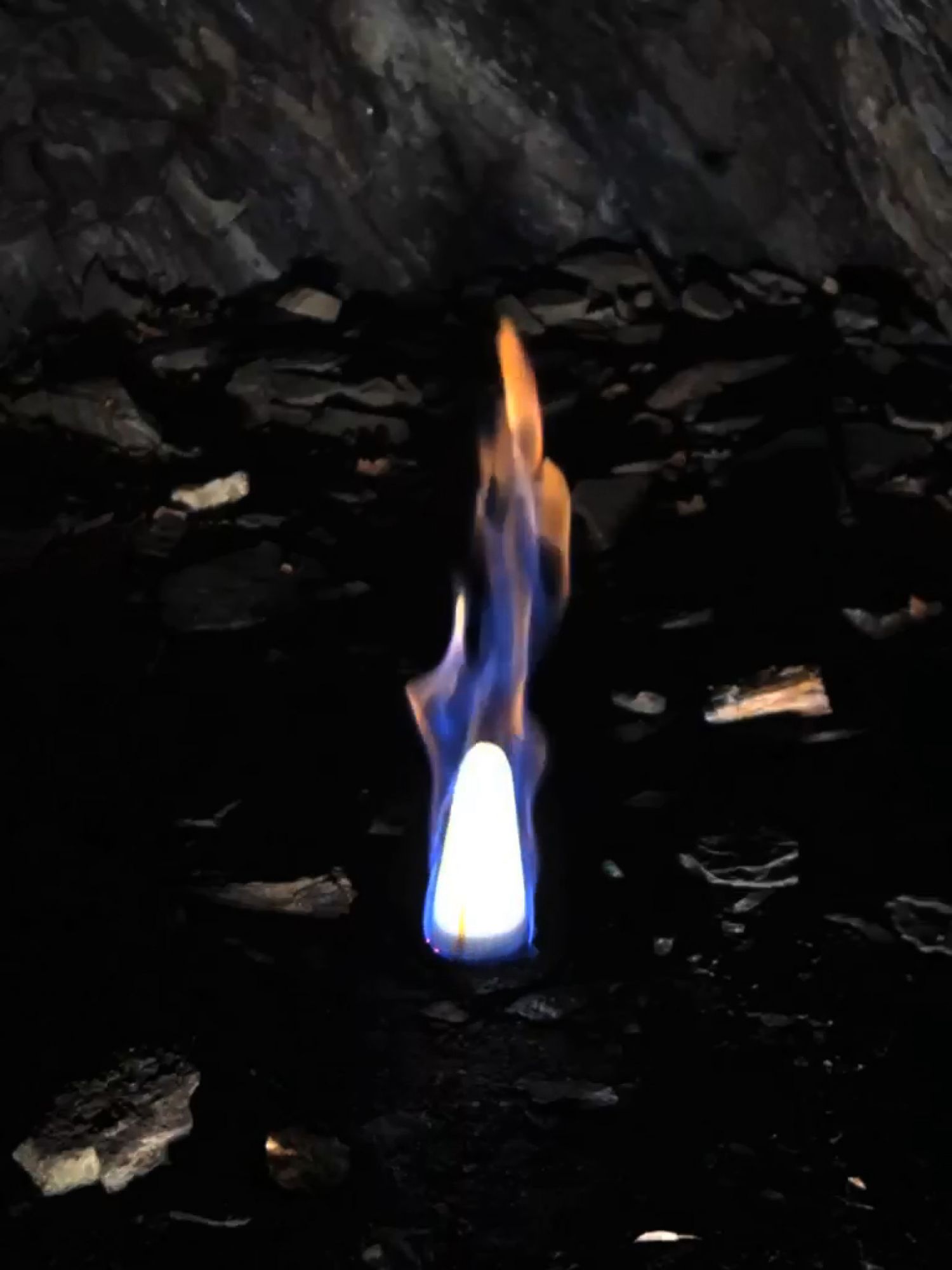
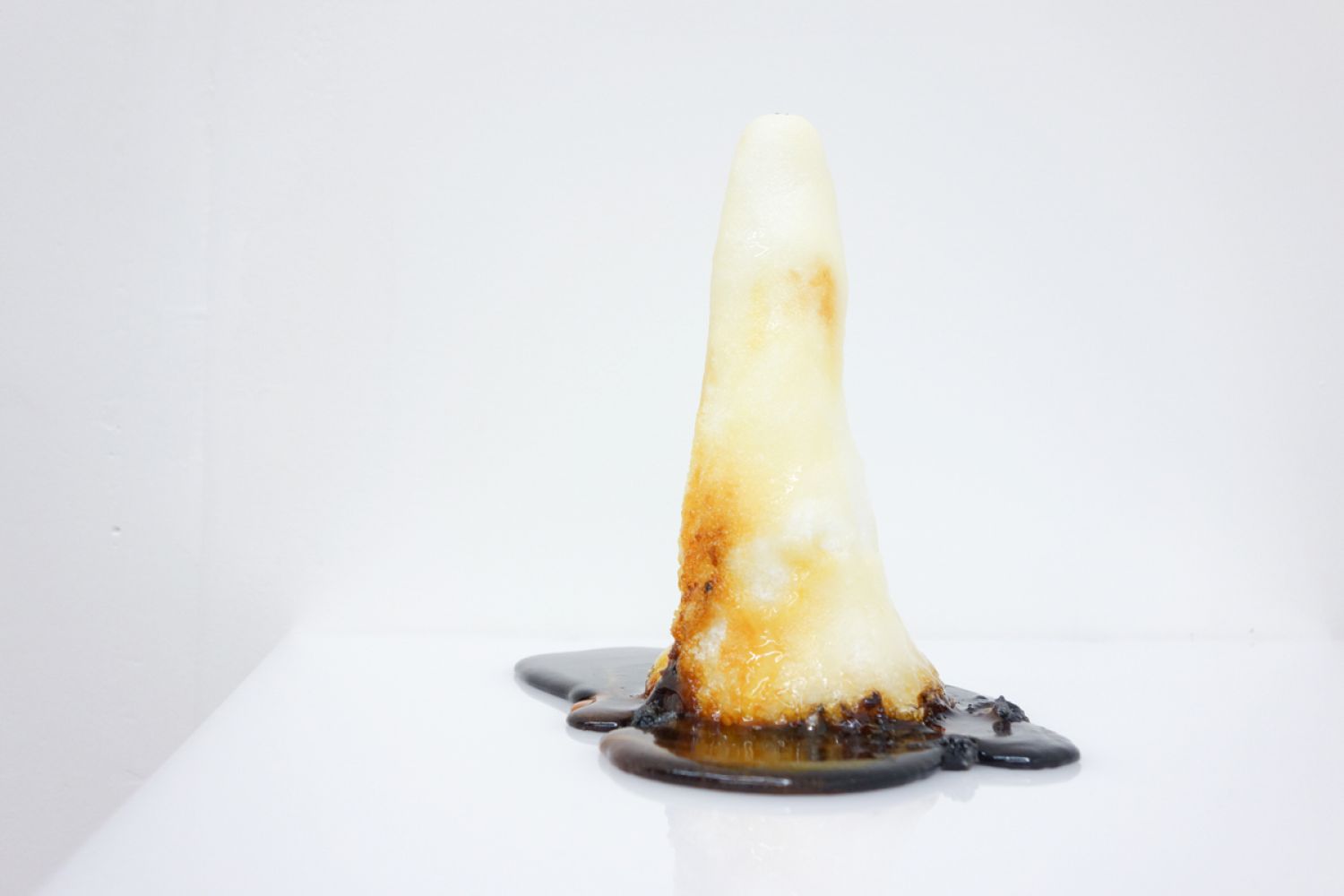
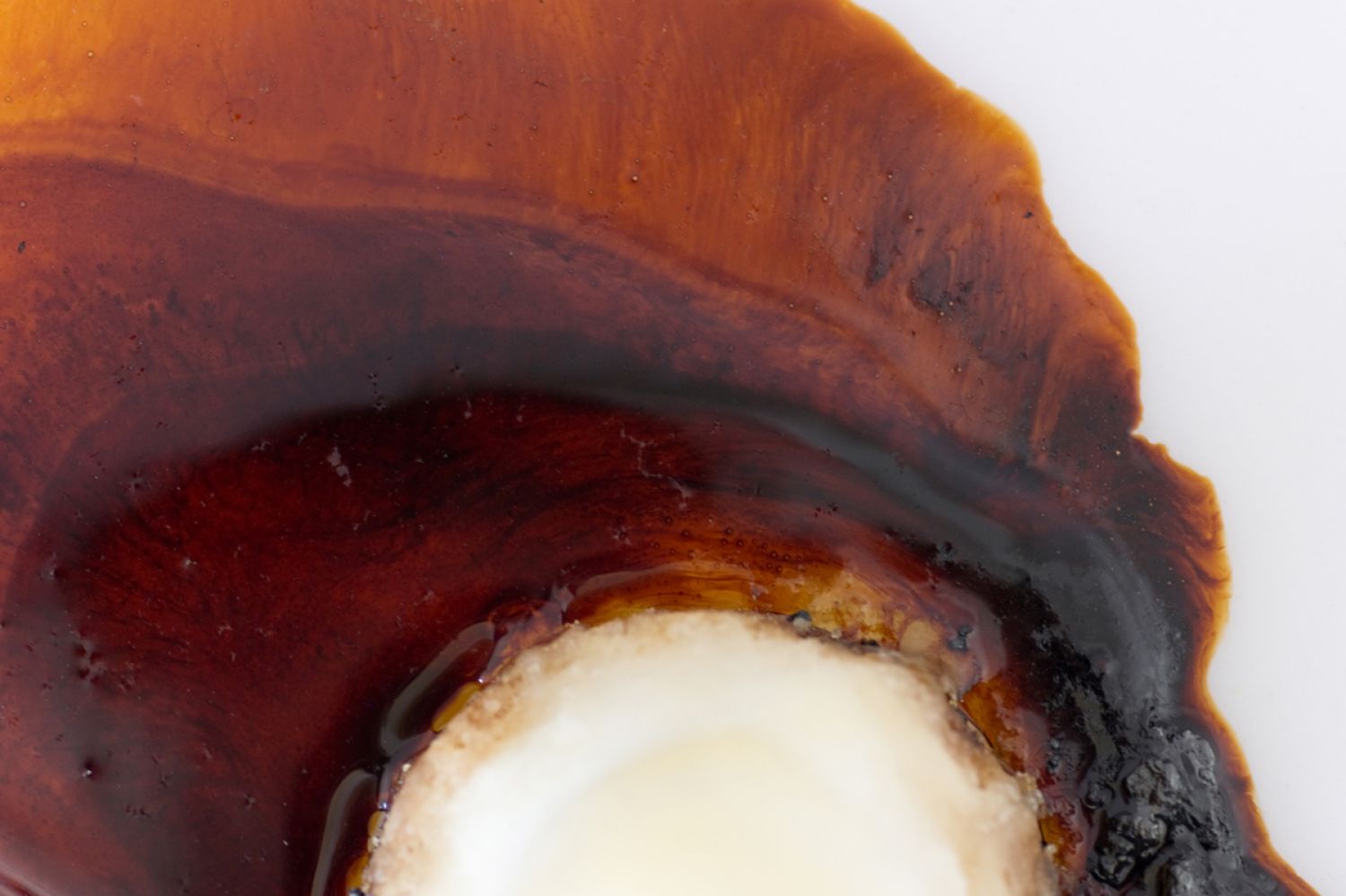
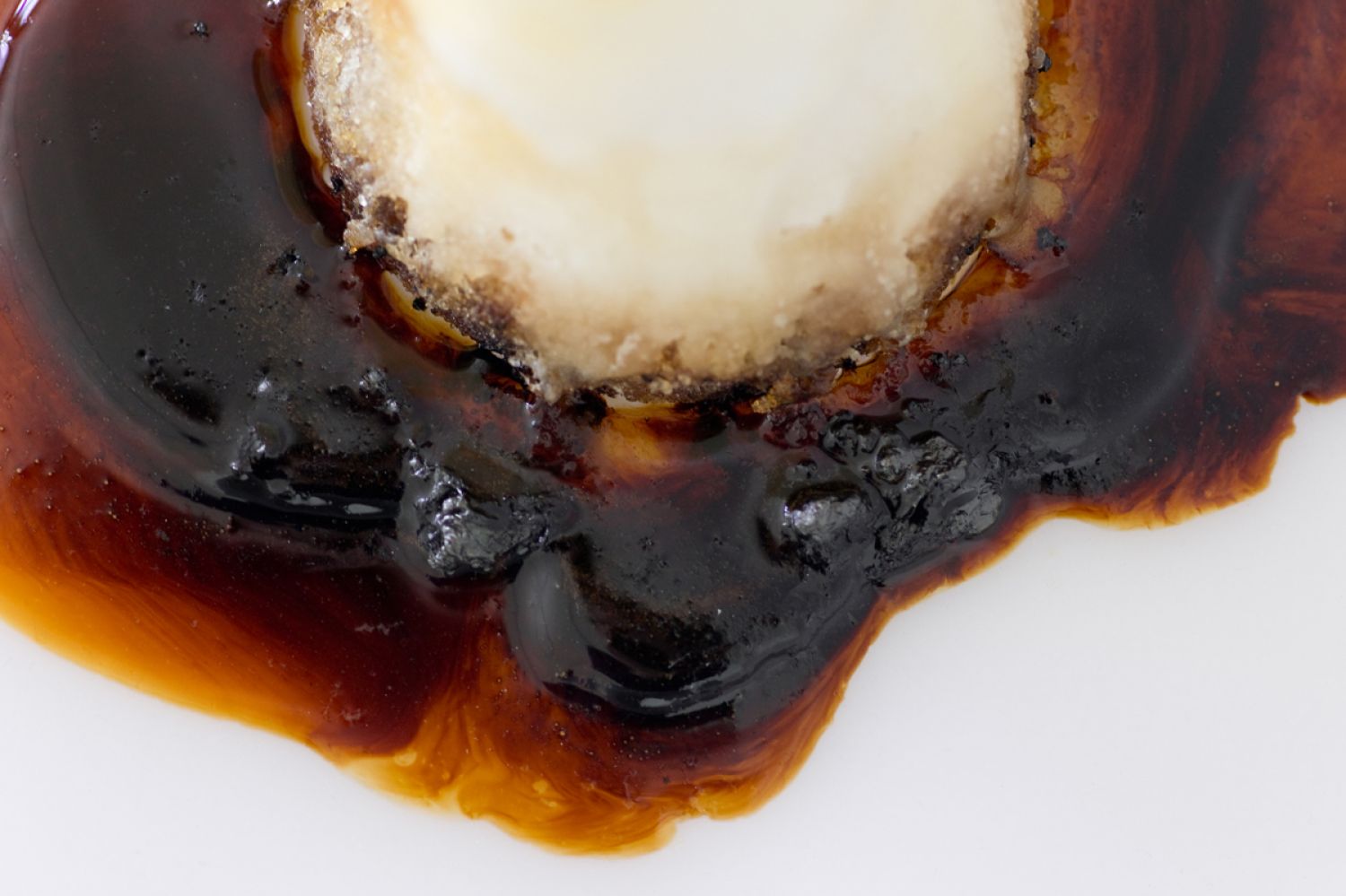
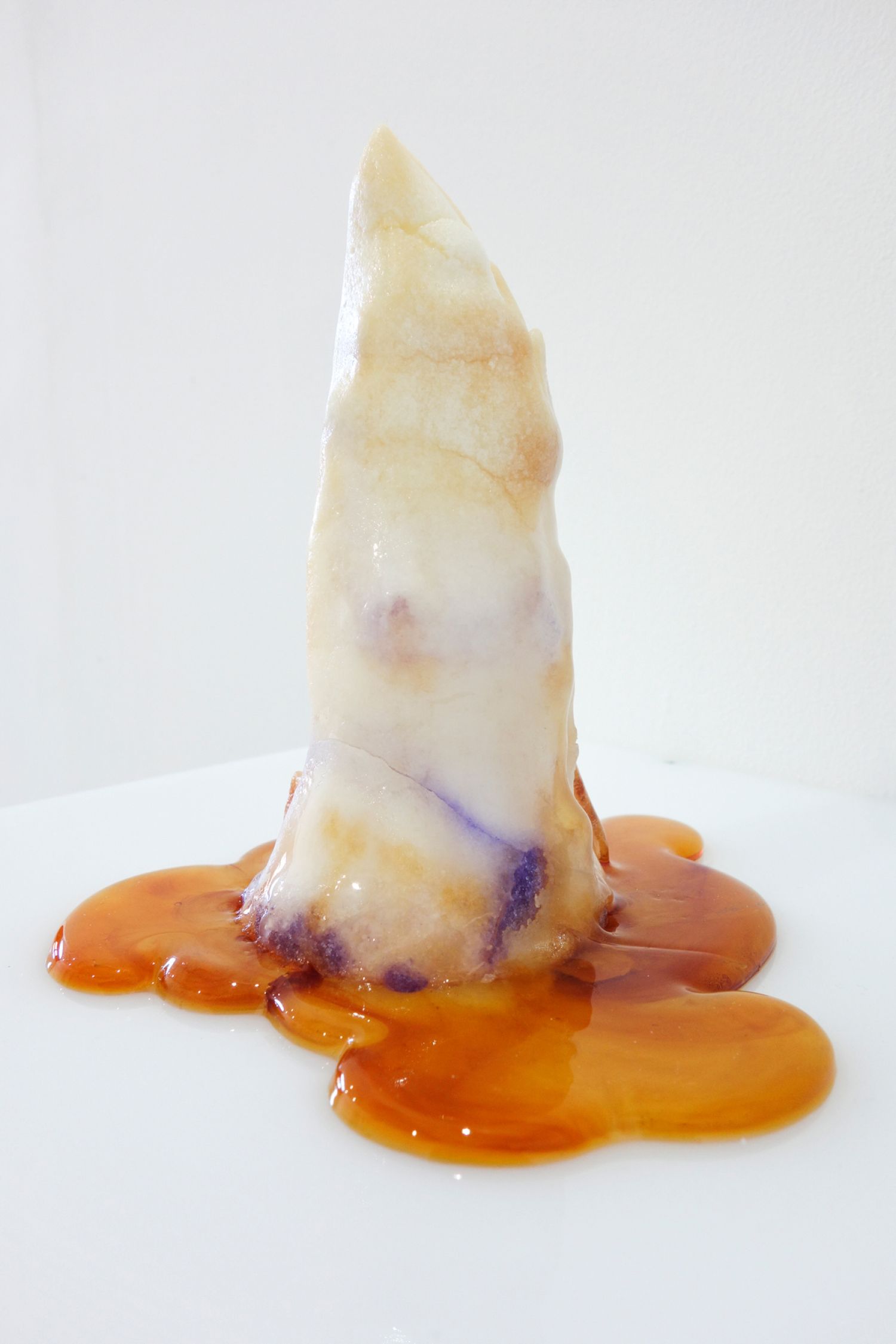
Due to its cone shape, the sugar loaf is an obviously phallic object. For the ritual, I chose a spot beside the railway tracks cutting through Schladen, which theoretically could have been visible from the building in which my grandfather had lived, from the one he had died in, and from the sugar factory as well. Both my father and my grandfather had died of dementia. Between the various factors that may have caused this illness, their diets could have been vital. Both the refined sugar and the alcohol, which here is used to burn the sugar cone, are substances that might indirectly influence dementia. These substances were burned, reduced, and the sculptural result of this process left in the landscape to deteriorate. Hardly any feelings of compassion, love, integration or belonging had been traded down from my father’s side of the family, thus the ritual of burning the sugar loaf (based on subconscious associations: warmth, sweetness, inebriation, the Gemütlichkeit, the local characteristics of the sugar factory) was an attempt to reinstate or induce some of those positive feelings.
This ritual was carried out once more in a cave close to a village in Rhenania-Palatinate in December 2014 [image 2]. An excerpt of the video recorded on that occasion was then shown in the controlled setting of an art gallery, complementary to a real burned sugar loaf sculpture («Sugar») on a wall-mounted sheet of acrylic functioning as a pedestal. It was part of the solo gallery show «A Magnet Between Proteins and Sugar» at Sismógrafo, Porto, Portugal, February–March 2015 [images 3–5]. This sculpture was shown twice after this, in December 2015 in Darmstadt, Germany, in the solo gallery exhibition «Fantastication» at Fenstergalerie Will, and in 2016 in the solo gallery show «Phantoms» at MART Gallery, Dublin, Ireland [image 6]. Each time, the sugar loaf was burned on the day of the opening, on its pedestal. In Ireland, methylated spirit is coloured with crystal violet to safely identify the harmful methyl alcohol. It gave a new aesthetic element to the artwork and shall be featured in future installations of the piece.



